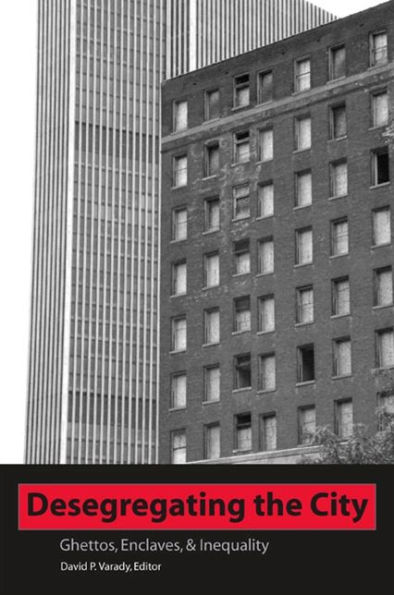Desegregating the City: Ghettos, Enclaves, and Inequality
Desegregating the City takes a global, multidisciplinary look at segregation and the strengths and weaknesses of different antisegregation strategies in the United States and other developed countries. In contrast to previous works focusing exclusively on racial ghettos (products of coercion), this book also discusses ethnic enclaves (products of choice) in cities like Belfast, Toronto, Amsterdam, and New York. Since 9/11 the ghetto-enclave distinction has become blurred as crime and disorder have emanated from both European immigrant ethnic enclaves and America's ghettos. The contributors offer a variety of tools for addressing the problems of racial and income segregation, including school integration, area-based "fair share" housing requirements, place-based mixed-income housing development, and expanded demand-side residential subsidy options such as housing vouchers. By exploring these alternatives and their consequences, Desegregating the City provides the basis for a combination of flexible antisegregation strategies.
1117651865
Desegregating the City: Ghettos, Enclaves, and Inequality
Desegregating the City takes a global, multidisciplinary look at segregation and the strengths and weaknesses of different antisegregation strategies in the United States and other developed countries. In contrast to previous works focusing exclusively on racial ghettos (products of coercion), this book also discusses ethnic enclaves (products of choice) in cities like Belfast, Toronto, Amsterdam, and New York. Since 9/11 the ghetto-enclave distinction has become blurred as crime and disorder have emanated from both European immigrant ethnic enclaves and America's ghettos. The contributors offer a variety of tools for addressing the problems of racial and income segregation, including school integration, area-based "fair share" housing requirements, place-based mixed-income housing development, and expanded demand-side residential subsidy options such as housing vouchers. By exploring these alternatives and their consequences, Desegregating the City provides the basis for a combination of flexible antisegregation strategies.
99.0
In Stock
5
1

Desegregating the City: Ghettos, Enclaves, and Inequality
332
Desegregating the City: Ghettos, Enclaves, and Inequality
332Hardcover
$99.00
99.0
In Stock

Product Details
| ISBN-13: | 9780791464595 |
|---|---|
| Publisher: | State University of New York Press |
| Publication date: | 05/26/2005 |
| Series: | SUNY series in African American Studies |
| Pages: | 332 |
| Product dimensions: | 6.00(w) x 9.00(h) x 1.00(d) |
About the Author
From the B&N Reads Blog
